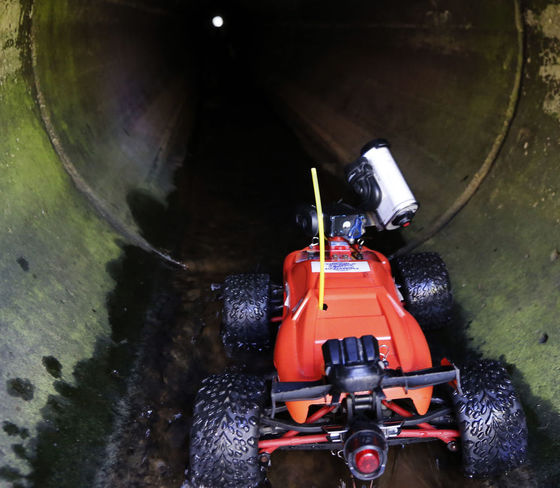
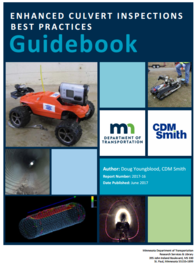 MnDOT District 6 has developed the Hydraulic Inspection Vehicle
Explorer (HIVE), a radio-controlled car that takes lights and a camera into
culverts and transmits inspection data wirelessly to a tablet. Each vehicle
costs roughly $1,500.
Every MnDOT district now has a HIVE, which has been used to
inspect hundreds of pipes and is already saving money.
One visual inspection of a culvert showed damage to
the ends of a pipe that typically would result in a full replacement cost
of about $45,000. However, HIVE video footage from within the pipe
showed the damage was limited to just 12 feet near the end. Instead of
replacing the entire pipe, MnDOT workers fixed the problem for $1,000,
resulting in a $44,000 savings.
The HIVE has received the 2016 Governor’s Better
Government Award and was recently selected as one of the nation’s top
research projects.
A July 26 webinar will review the HIVE and other enhanced culvert
inspection technologies. Find more information at mndot.gov/research/projects/hive/hive.html.
Read the Guide
The HIVE is just one of the advanced inspection technologies
included in MnDOT’s new Enhanced
Culvert Inspections Best Practices Guidebook.
|
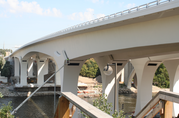 BRIDGES & STRUCTURES — Since 2008, the I-35W St. Anthony Falls Bridge has operated as a “smart bridge,” with over 500 sensors that continuously provide data about the impact of traffic and weather on the concrete structure. To accurately analyze the data generated, researchers must isolate the effects of structural damage from normal cycles of expansion and contraction. Investigators developed a method for creating a “vibration fingerprint”—a baseline of the bridge’s natural vibration that makes unexpected deviations more apparent. Data from this fingerprint will help MnDOT detect when a bridge needs repair and ultimately inform design improvements so that bridges better withstand stresses.
Technical Summary 2017-01
|
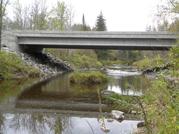 BRIDGES & STRUCTURES — Local agencies with limited budgets are often unable to maintain all of their bridges. Removing bridges on low-use roads where alternative access is available for nearby residents could mitigate funding constraints. Officials are often reluctant to take this step, however, because stakeholders often disagree on the criteria for determining which bridges should be removed and how to manage the attendant public relations issues. The Local Road Research Board commissioned a survey of state departments of transportation (DOTs) on this topic, asking about the relationship between the DOT and the local government (for example, whether incentives are offered for bridge removal), whether local agencies maintain an inventory of candidates for removal and how bridges can be removed from the National Bridge Inventory.
Transportation Research Synthesis 1702
A Transportation Research Synthesis (TRS) is a short-term research project that summarizes research activity and current state of the practice. To view TRSs or request one to address your research need, visit mndot.gov/research/TRS.html.
|
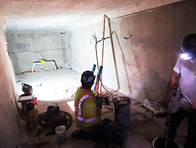 BRIDGES & STRUCTURES — Post-tensioned bridges, which are strengthened by running steel strands through the concrete members, are especially durable, but grout around the steel strands is needed to keep them from corroding. Grouting materials used in about 40 older Minnesota bridges often produced air voids that don’t completely cover the strands, which could lead to corrosion and may require repair. A two-phase research effort has produced techniques for evaluating these structures and guidelines for managing the process of soliciting and procuring engineering and construction services to repair them.
Technical Summary 2017-04
|
 TRAFFIC & SAFETY — Roundabouts are unquestionably safer than intersections with traffic signals or stop signs. But what’s the best way to configure signs, pavement markings, illumination and other treatments to get drivers to slow down enough to keep roundabouts safe? Research into existing practices provided information on the effectiveness of various treatments—including high-tech solutions like speed-activated, LED-enhanced warning signs—and a methodology for studying any given intersection to determine what will work best for that location.
Technical Summary 2017-14
|
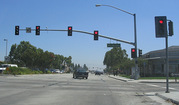 TRAFFIC & SAFETY — Because crashes at intersections are rare, collisions are not the best indicator of potential safety problems at these locations. Instead, investigators used the SMART-Signal system, which collects data at more than 100 intersections in the Twin Cities, to measure how often drivers run red lights, along with vehicle speeds and traffic volumes. They used this data to develop a formula to estimate with more than 83 percent accuracy how many daily traffic conflicts are likely to occur at each intersection. This kind of data is very useful for directing law enforcement efforts as well as adjustments to signal timing or intersection layout.
Technical Summary 2017-08
|
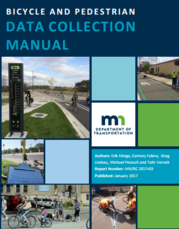 As part of an ongoing effort to institutionalize bicycle and pedestrian counting in Minnesota, MnDOT has published a new manual to help city, county, state and other transportation practitioners in their counting efforts. The Bicycle and Pedestrian Data Collection Manual provides guidance and methods for collecting bicycle and pedestrian traffic data. This introductory guide to nonmotorized traffic monitoring is designed to help local jurisdictions, nonprofit organizations and consultants design their own programs Several case studies are included to illustrate how bicycle and pedestrian traffic data can be used to support transportation planning and engineering.
Bicycle and Pedestrian Data Collection Manual
|
7/18
MnROAD research webinar on Balanced Mix Design
7/18-21
TRB Workshop (Duluth)
7/26
MnDOT Enhanced Culvert Inspections webinar
8/1-9/14
MnDOT/LRRB Research RFP
9/10-13
ASCE Congress (Duluth)
9/27-28
International Intelligent Construction Conference (Minneapolis)
10/16-19
ARRA Semi-Annual Meeting (Minneapolis)
10/24
MnDOT Rolling Density Meter Peer Exchange
|